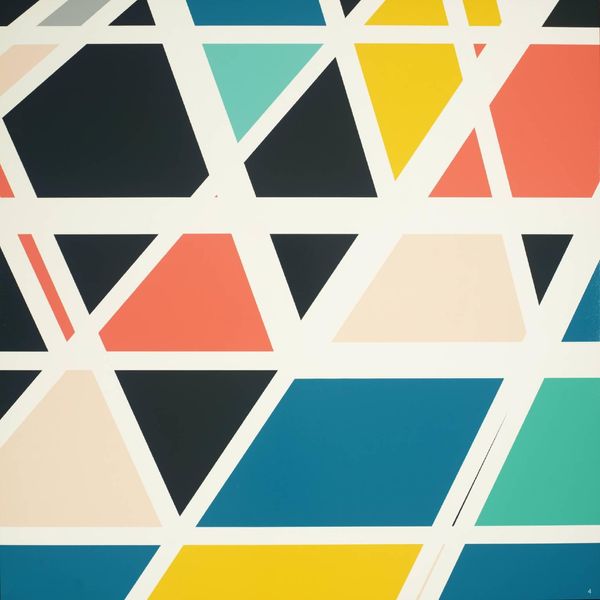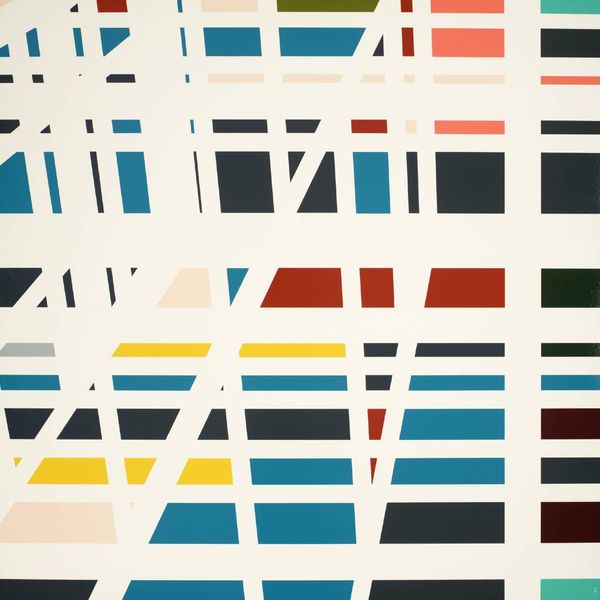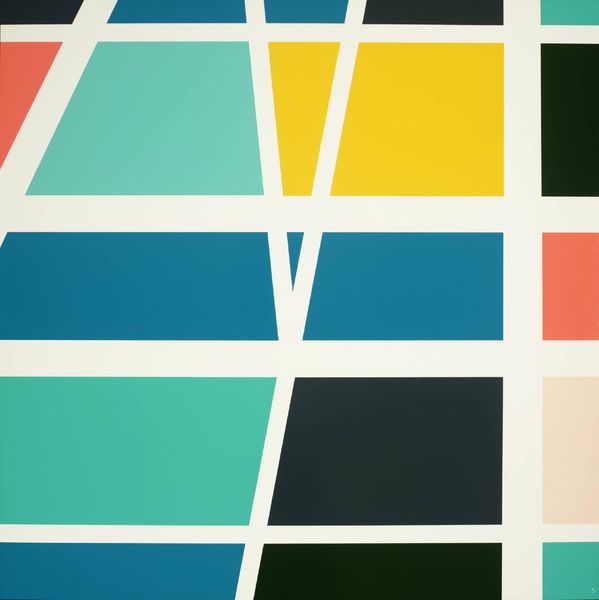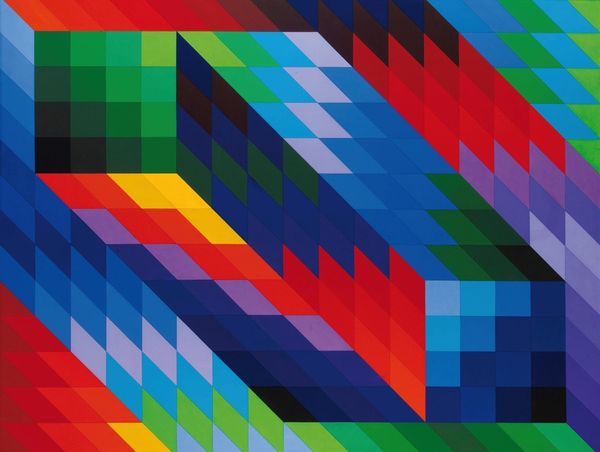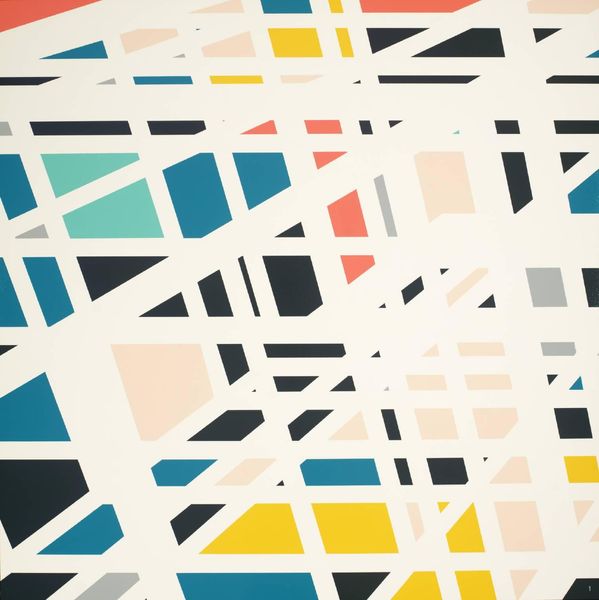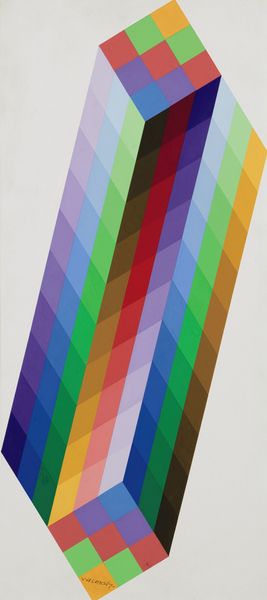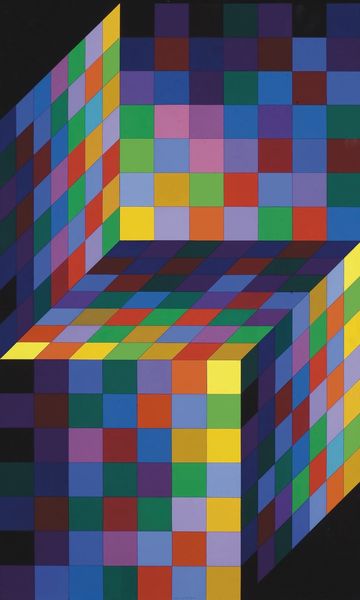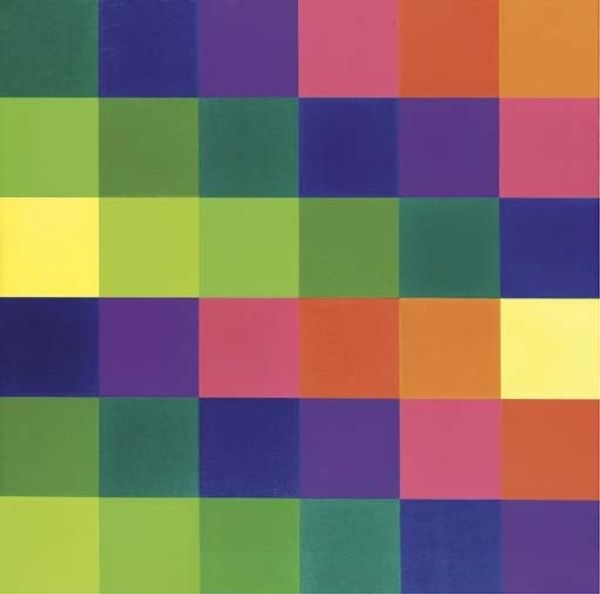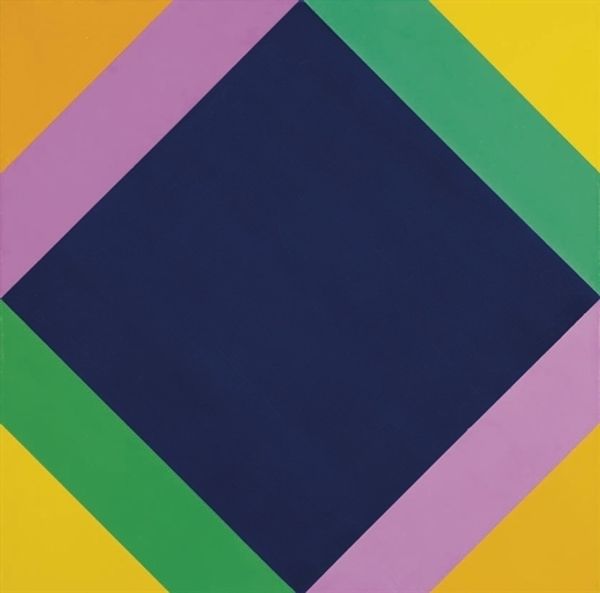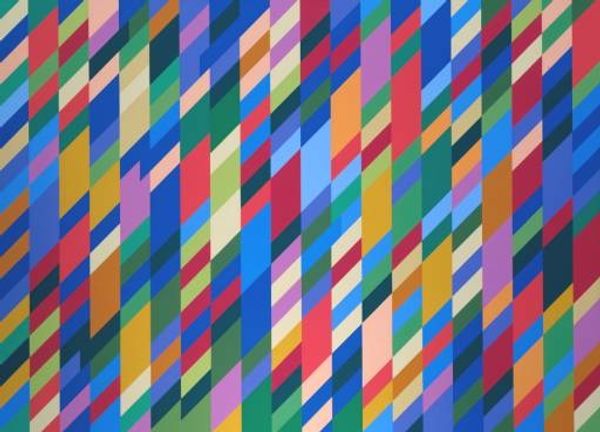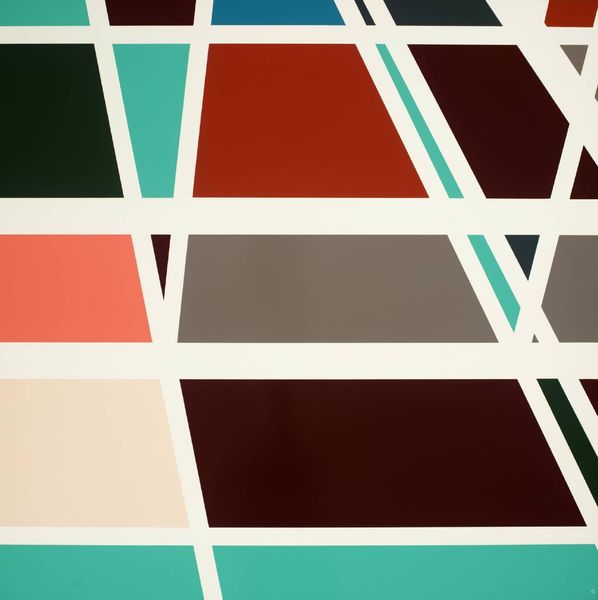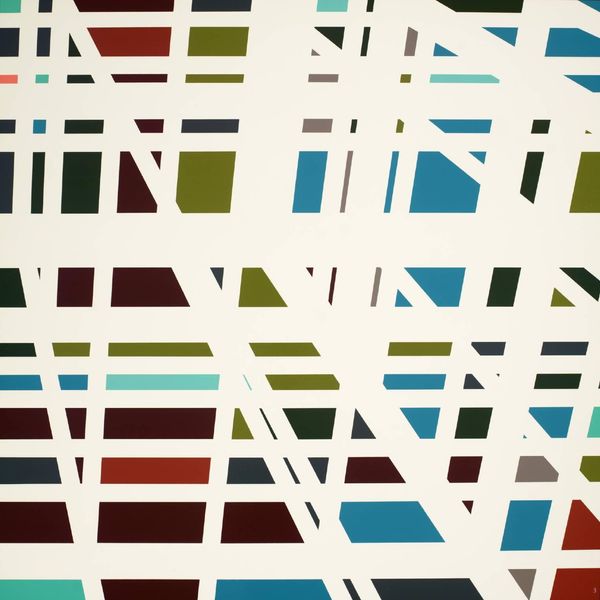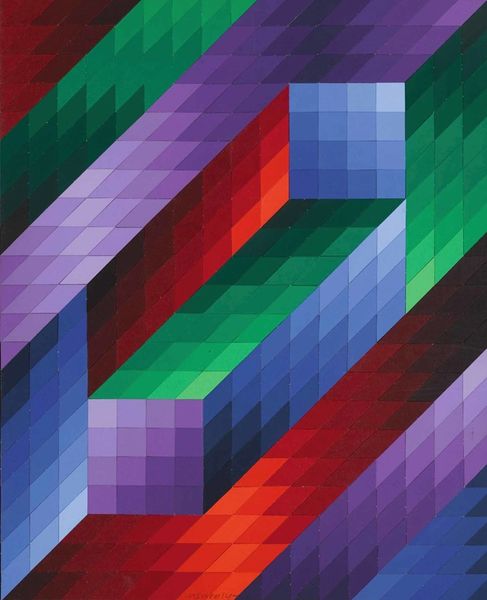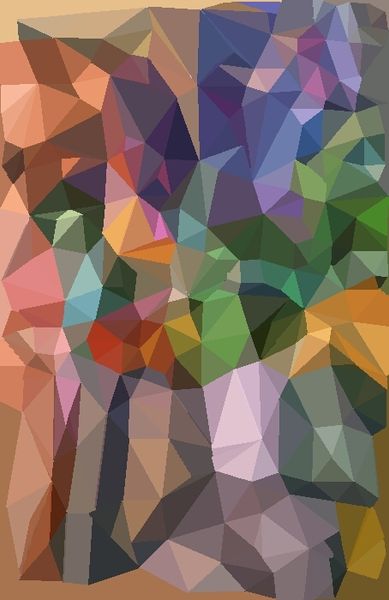
#
random pattern
#
pattern
#
pattern
#
geometric pattern
#
subtle pattern
#
abstract pattern
#
minimal pattern
#
repetition of pattern
#
vertical pattern
#
line
#
pattern repetition
#
repetitive pattern
#
orange
Copyright: Bridget Riley,Fair Use
Curator: Before us hangs Bridget Riley's "Shadow Play," a canvas realized in 1990. Riley's name has become synonymous with Op Art, but to truly engage with her work, we have to consider her influences, particularly the legacies of Impressionism and Seurat’s Pointillism. Editor: My first thought? This is like stained glass, but if someone took it apart and then reassembled it while tipsy. There's this delightful imbalance, a woozy energy that's actually quite calming. Curator: Interesting. The staggered effect, I think, pushes us to examine not just colour, but also our perceptions. Riley studied the science behind how our eyes perceive the world; and so "Shadow Play" isn't just an attractive piece of decoration; it functions as a experiment in colour theory. Editor: Totally! I feel like I’m watching a really chill tennis match… each color pairing just smacking the ball--or, well, my eyeballs, over to the other side. But beyond the science, there's also a human touch, right? Curator: Precisely. Riley isn't just throwing paint at a canvas. There's intention. Each colour choice plays a crucial role in constructing the painting’s overall impact. Think about it--Riley painted within a sociopolitical context where color was frequently weaponized and coded. She confronts these prejudices in her aesthetic experiment. Editor: It's clever, playing with perception like that, challenging us to really see what's there, rather than what we expect to see. In a world oversaturated with images and information, I suppose there is a certain rebellion in a minimalist gesture! It’s very “stop and smell the roses” in aesthetic form! Curator: It leaves one with a sense of visual afterimage--as though her canvases, once seen, are forever imprinted upon our awareness. Her play on pattern also brings to the fore complex questions surrounding capitalism, repetitive labour, and the violence implicit in mechanization. Editor: I’ll probably stare at my kitchen tiles with suspicion tonight, questioning whether they are real or another optical illusion. Well, "Shadow Play," you've certainly stirred up a colorful storm in my brain. Curator: It’s a potent example of how art can not only reflect society but can question the very foundation of how we interact with our world.
Comments
No comments
Be the first to comment and join the conversation on the ultimate creative platform.
